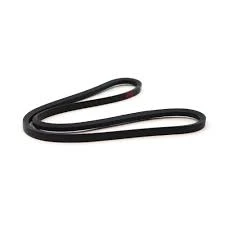- Arabic
- French
- Russian
- Spanish
- Portuguese
- Turkish
- Armenian
- English
- Albanian
- Amharic
- Azerbaijani
- Basque
- Belarusian
- Bengali
- Bosnian
- Bulgarian
- Catalan
- Cebuano
- Corsican
- Croatian
- Czech
- Danish
- Dutch
- Afrikaans
- Esperanto
- Estonian
- Finnish
- Frisian
- Galician
- Georgian
- German
- Greek
- Gujarati
- Haitian Creole
- hausa
- hawaiian
- Hebrew
- Hindi
- Miao
- Hungarian
- Icelandic
- igbo
- Indonesian
- irish
- Italian
- Japanese
- Javanese
- Kannada
- kazakh
- Khmer
- Rwandese
- Korean
- Kurdish
- Kyrgyz
- Lao
- Latin
- Latvian
- Lithuanian
- Luxembourgish
- Macedonian
- Malgashi
- Malay
- Malayalam
- Maltese
- Maori
- Marathi
- Mongolian
- Myanmar
- Nepali
- Norwegian
- Norwegian
- Occitan
- Pashto
- Persian
- Polish
- Punjabi
- Romanian
- Samoan
- Scottish Gaelic
- Serbian
- Sesotho
- Shona
- Sindhi
- Sinhala
- Slovak
- Slovenian
- Somali
- Sundanese
- Swahili
- Swedish
- Tagalog
- Tajik
- Tamil
- Tatar
- Telugu
- Thai
- Turkmen
- Ukrainian
- Urdu
- Uighur
- Uzbek
- Vietnamese
- Welsh
- Bantu
- Yiddish
- Yoruba
- Zulu
Nov . 17, 2024 14:44 Back to list
Understanding PK Belt Sizes for Optimal Performance and Efficiency
Understanding PK Belt Sizes A Comprehensive Guide
PK belts, also known as multi-groove belts, are essential components in numerous mechanical systems. They are particularly prominent in automotive engines, industrial machinery, and HVAC systems. The PK designation is often associated with a specific set of dimensions and performance characteristics tailored to meet the demands of various applications. This article aims to clarify PK belt sizes, helping you understand their significance and how to choose the right one for your needs.
What Are PK Belts?
PK belts feature a unique design characterized by multiple grooves or ribs that run parallel along the length of the belt. This design allows for increased surface area contact between the belt and the pulleys, resulting in enhanced grip and reduced slippage. The 'PK' designation refers to a specific industry standard that denotes the profile of the belt, making it easier to identify compatible parts.
Understanding Belt Sizes
PK belts come in various sizes, with each size denoted by a code that indicates its length and width. The most common size codes include PK2, PK3, PK4, and so on, where the number indicates the number of grooves. In addition to this coding system, the actual dimensions of the belt—namely its length and width—are equally important in ensuring a proper fit for your application.
1. Belt Length The length of a PK belt is typically measured in inches or millimeters and is critical for compatibility. Measuring the existing belt or consulting the equipment's manual can help determine the appropriate length.
pk belt sizes

2. Belt Width The width of the belt is essential for ensuring it fits snugly within the pulley system without risk of slipping or wear. Wider belts generally provide greater load capacity and torque transfer.
3. Application Requirements Different applications may demand specific belt sizes based on the load they will carry or the speed at which they will operate. Understanding the requirements of your machine can help you select the right PK belt size.
Choosing the Right PK Belt
When selecting a PK belt, it’s important to consider the following
- Compatibility Always ensure that the belt is compatible with the pulleys and other components of your system. - Quality Opt for high-quality belts from reputable manufacturers to ensure durability and performance. - Application Consider the specific operational conditions, including temperature, load, and speed, to choose a belt tailored to your needs.
In conclusion, PK belt sizes play a crucial role in the effective functioning of machinery and systems that rely on belt drives. By understanding the implications of different sizes and their specifications, you can make informed decisions that enhance operational efficiency and longevity in your applications. Proper maintenance and periodic checks will also ensure that your PK belts continue to perform optimally.
-
Korean Auto Parts Timing Belt 24312-37500 For Hyundai/Kia
NewsMar.07,2025
-
7PK2300 90916-T2024 RIBBED BELT POLY V BELT PK BELT
NewsMar.07,2025
-
Chinese Auto Belt Factory 310-2M-22 For BMW/Mercedes-Benz
NewsMar.07,2025
-
Chinese Auto Belt Factory 310-2M-22 For BMW/Mercedes-Benz
NewsMar.07,2025
-
90916-02660 PK Belt 6PK1680 For Toyota
NewsMar.07,2025
-
drive belt serpentine belt
NewsMar.07,2025

